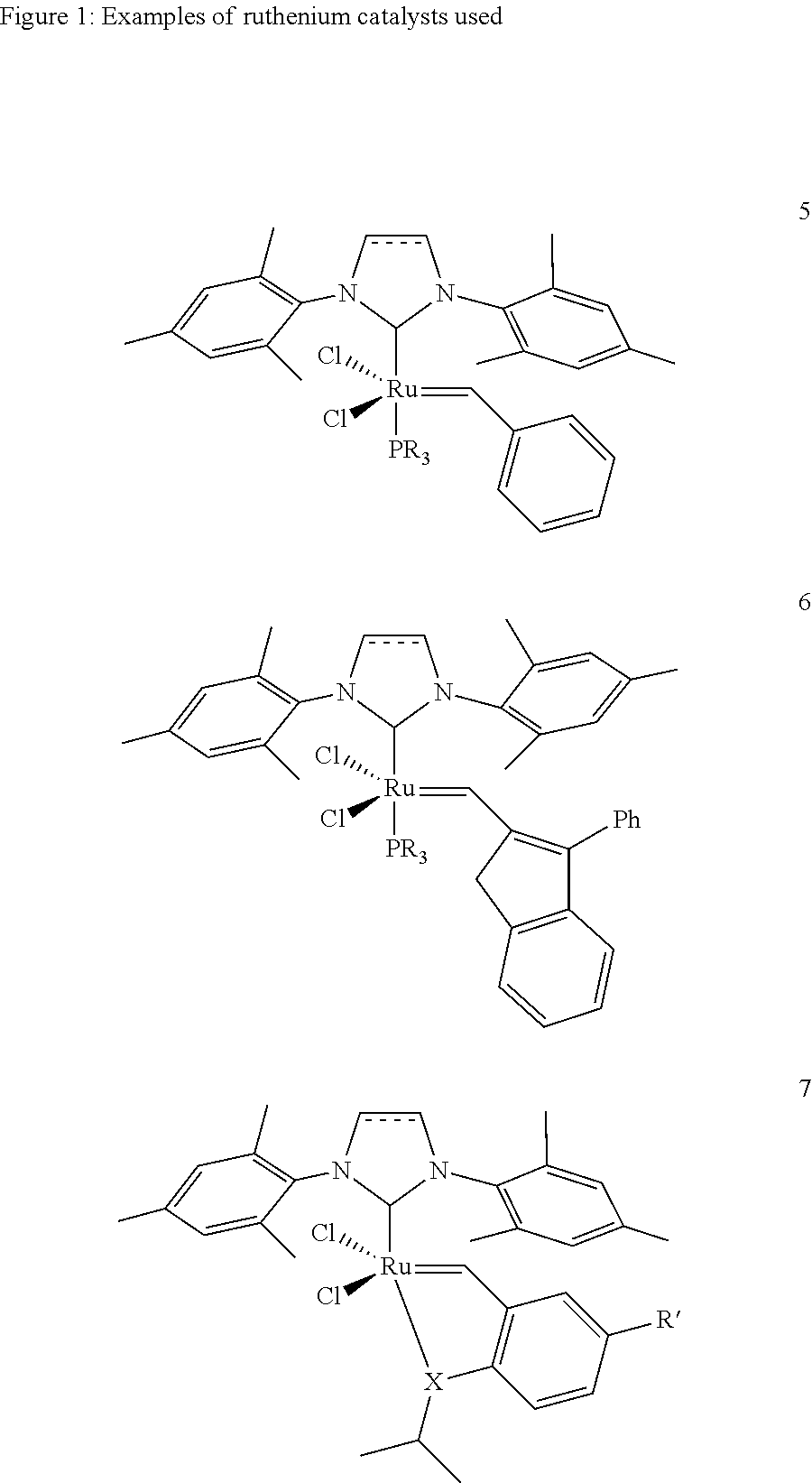Unsaturated dicarboxylic acids from unsaturated cyclic hydrocarbons and acrylic acid by way of metathesis, the use thereof as monomers for polyamides, polyesters and polyurethanes, and subsequent reaction to diols and diamines
a technology of unsaturated cyclic hydrocarbons and acrylic acids, which is applied in the field of unsaturated dicarboxylic acids, can solve problems such as inability to achieve industrial reactions, and achieve the effects of improving the stability of the reaction reaction
- Summary
- Abstract
- Description
- Claims
- Application Information
AI Technical Summary
Problems solved by technology
Method used
Image
Examples
Embodiment Construction
:
[0015]1. 1,3-Bis(2,4,6-trimethylphenyl)-4,5-dihydroimidazol-2-ylidene[2-(i-propoxy)-5-(N,N-dimethylaminosulfonyl)phenyl]methyleneruthenium(II) dichloride (1 mol % based on the cycloalkene) is placed together with toluene (2.25 ml) under argon in a Schlenk vessel. A solution of cyclopentene (0.3 g, 4.4 mmol) and acrylic acid (0.79 g, 11 mmol) in toluene (2.25 ml) is added dropwise to the catalyst solution. The reaction mixture is stirred at 60° C. for one hour and subsequently cooled to room temperature. The solid which precipitates is filtered off, washed with a little cold toluene and dried under reduced pressure. The product was obtained as a white solid (0.128 g, 16%). A purity of 98.9% was determined by NMR analysis.
[0016]2. 1,3-Bis(2,4,6-trimethylphenyl)-4,5-dihydroimidazol-2-ylidene[2-(i-propoxy)-5-(N,N-dimethylaminosulfonyl)phenyl]methyleneruthenium(II) dichloride (1 mol % based on the cycloalkene) is placed together with toluene (1.75 ml) under argon in a Schlenk vessel. A ...
PUM
| Property | Measurement | Unit |
|---|---|---|
| temperatures | aaaaa | aaaaa |
| temperatures | aaaaa | aaaaa |
| temperatures | aaaaa | aaaaa |
Abstract
Description
Claims
Application Information
 Login to View More
Login to View More - R&D
- Intellectual Property
- Life Sciences
- Materials
- Tech Scout
- Unparalleled Data Quality
- Higher Quality Content
- 60% Fewer Hallucinations
Browse by: Latest US Patents, China's latest patents, Technical Efficacy Thesaurus, Application Domain, Technology Topic, Popular Technical Reports.
© 2025 PatSnap. All rights reserved.Legal|Privacy policy|Modern Slavery Act Transparency Statement|Sitemap|About US| Contact US: help@patsnap.com


